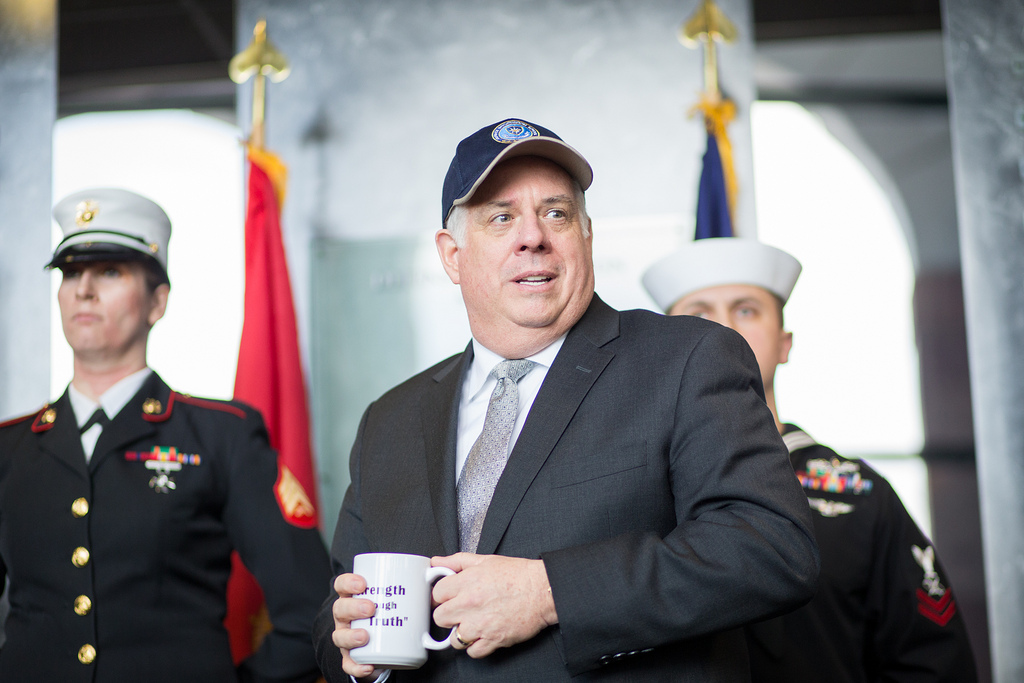Last week, Gov. Larry Hogan unveiled his proposed fiscal 2018 budget for the state of Maryland. Over the coming weeks, the state’s General Assembly will examine and discuss all aspects of the governor’s budget before submitting their changes in early spring. With the governor’s proposal numbering more than a thousand pages, there’s a lot of material to be explored.
As I wrote in December, there was no hiding that Hogan and his team faced a serious challenge in crafting a budget. With revenues coming in far lower than expected, mostly due to volatility in capital gains tax revenues, the structural deficit (revenues minus spending at current projected levels) was $339 million for fiscal 2018 alone, and nearly $1.2 billion by fiscal 2021. Driving this growth in the structural deficit were mandated spending policies that would cause future spending to outstrip revenue growth even in the rosiest of economic projections.
With this background in mind, what criteria would Hogan’s budget have to meet in difficult times like these in order to be considered a success? I can think of three general requirements. A sound budget should spend money targeted to a core set of priorities, eliminate unnecessary expenditures and look to the future by addressing the underlying factors that have caused the problem in the first place.
Hogan’s budget does all three.
In terms of priorities, it’s clear education is important to the governor. For yet another year, aid to public school systems is at a record high, totaling $6.4 billion. The University System of Maryland’s projected 5 percent growth in tuition is limited to just 2 percent as part of the proposed $1.35 billion allocated to the system. On the environment, the governor introduced a green jobs initiative to provide vocational training in the field of renewable energy, and allocated $51.3 million to the Chesapeake and Atlantic Coastal Bays 2010 Trust Fund, continuing his run of being the only Maryland governor to fully fund the program. Further demonstrating a commitment to a strong Maryland economy, the budget also allocated funds for job training programs and has been paired with a proposal on manufacturing development in economically depressed areas of the state, including Baltimore, Western Maryland and the Eastern Shore.
The proposed budget also does something that would have seemed impossible just a few years ago: It actually reduces spending. Hogan’s proposed operating budget totals $17.1 billion, a slight decrease from the year before. Additionally, borrowing is limited to $995 million for a second straight year. So how does the governor’s plan manage to spend less money than the year before and still fund Maryland’s priorities? In part, the governor reduced spending on specific programs where demand for resources had decreased. For example, Maryland’s Temporary Cash Assistance Program is experiencing a far smaller caseload than in previous years, allowing funding to be reduced. This fine-tooth comb approach speaks to the kind of fiscal discipline necessary to balance a budget in tough times.
Finally, the governor has presented a plan to address the factors that have led to Maryland’s current budget difficulties and works to prevent similar situations from occurring in future years. Learning from the difficulties of affording rapidly increasing debt service payments as O’Malley-era bonds come due, the decision to hold borrowing to $995 million will benefit future administrations, be they Democratic or Republican. The governor’s introduction of the Common Sense Spending Act limits the growth of mandated spending and enables the reduction of mandated spending that increases faster than revenue growth. And the administration’s proposed Fiscal Responsibility Act would work to automatically add future budget surpluses to the states’ rainy day fund (formally called the Revenue Stabilization Account), giving the state a larger reserve to draw from in years when revenue growth is weak. Together, these proposals work to avoid making responsible budgeting easier in future years and address the practices that have led to the current situation.
To be sure, Hogan’s budget has received criticism. Despite following legislatively created spending formulas, the reduction in state funds for Baltimore public schools still further complicates that system’s current financial difficulties. Additionally, the governor’s decision to not set aside funding for a package of bills the legislature passed last session designed to help Baltimore recover from the 2015 riots has been met with accusations that the governor is balancing his budget on the back of the city.
But this criticism is unwarranted, and probably premature. The governor introduced a number of initiatives in the beginning of this year’s legislative session specifically designed to help Baltimore’s economy and unemployed residents (such as the Maryland Jobs Initiative ), as well as expanding vocational tech schools in the city. And we shouldn’t forget that last year, the governor showed willingness to work with Democrats to provide $12.7 million in additional funding to Baltimore schools in a supplemental budget. While money is tight this year, there’s no reason that a bipartisan compromise can’t be reached again as long as all parties put away their rhetoric.
So while the battle over the budget is just beginning in Annapolis, Hogan has started off by introducing a plan that should be considered highly successful considering the circumstances. For a state struggling to live within its means, Hogan has done his part to put us on the right track.
Sam Wallace is a public policy graduate student. He can be reached at samhwallace@gmail.com.



